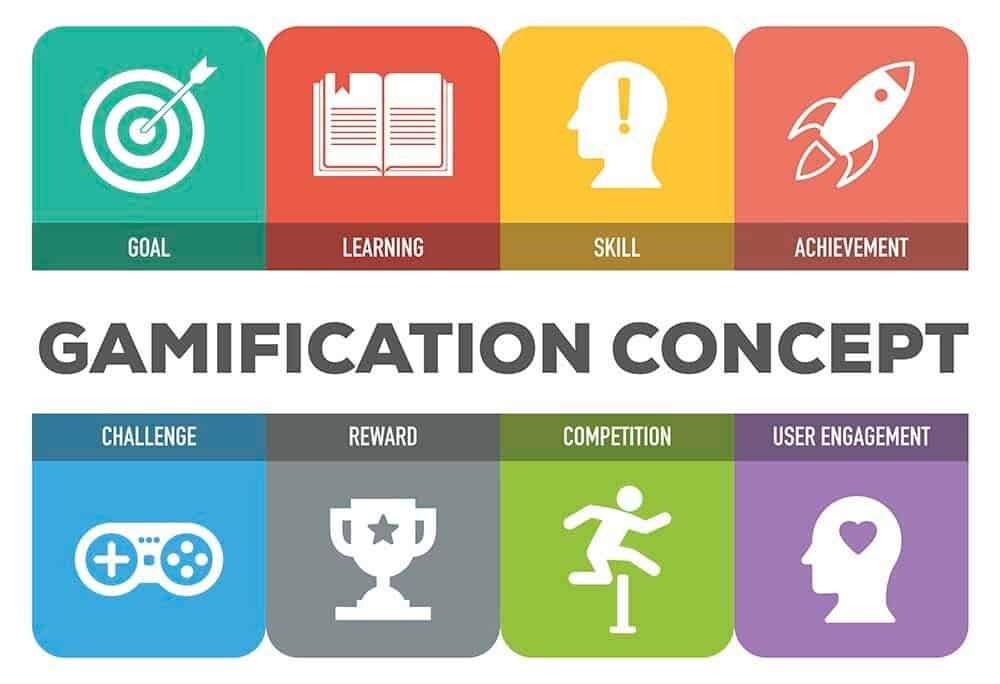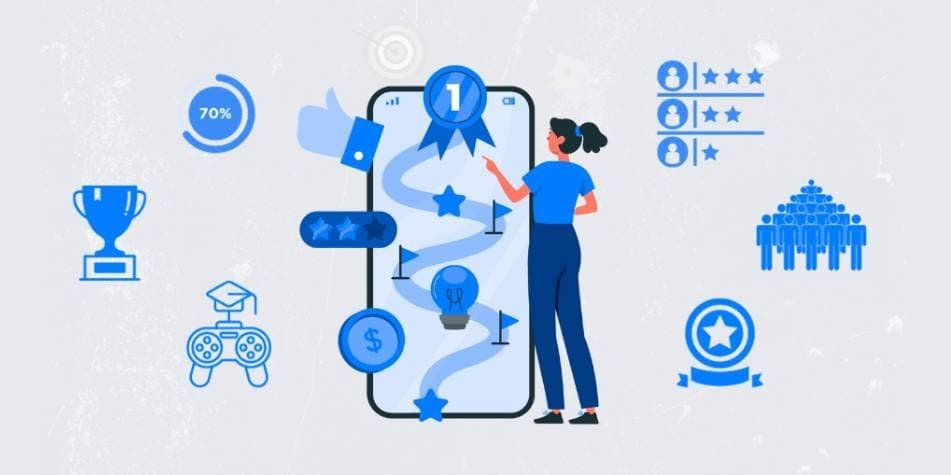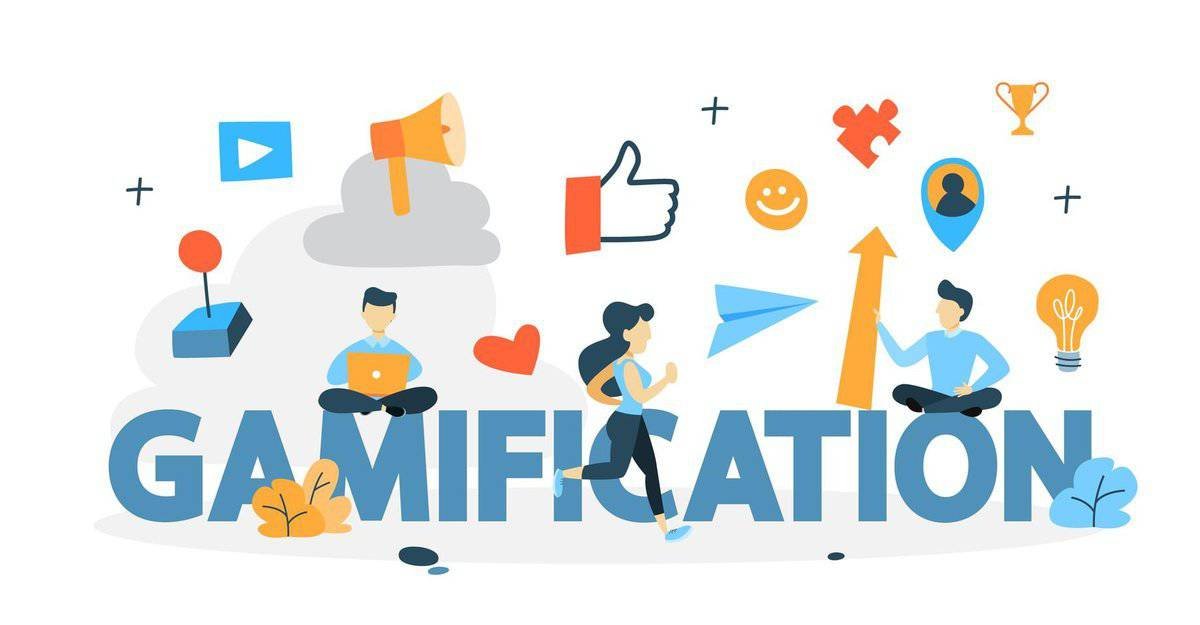There’s a proven way to boost engagement and drive sales for your online course: leveraging gamification. By incorporating game-like elements such as points, badges, and leaderboards, you can transform your learning environment into an engaging experience that motivates your students. Not only does this enhance their learning journey, but it also encourages them to complete your courses and recommend them to others, ultimately increasing your sales and success in the competitive online education landscape.
Key Takeaways:
- Enhanced Engagement: Incorporating gamification elements like badges, points, and competition significantly boosts learner engagement by making the learning experience more enjoyable and interactive.
- Improved Retention: Game-like formats help in breaking down information into manageable chunks, leading to better recall and retention of course material for learners.
- Instant Feedback: Gamification provides opportunities for immediate feedback through quizzes and checkpoints, motivating students and confirming their understanding of the material.

Understanding Gamification
To fully leverage the power of gamification in your online courses, it’s imperative first to grasp its core principles. Gamification involves incorporating game-like elements into non-game contexts to enhance user engagement and motivation. By integrating features such as points, badges, progress bars, and leaderboards, you transform the learning experience from a mundane task into an engaging journey. This not only increases interaction with the material but also encourages your learners to stay focused and invested in their educational growth.
Definition and Key Concepts
Even as the term “gamification” has gained popularity in recent years, its roots extend back to early 2002, when Nick Pelling first coined it. The fundamental idea is to harness intrinsic human desires for achievement, competition, and social interaction, making learning more enjoyable and effective. This means that by tapping into these core motivations, you can create a more dynamic learning environment that resonates with your audience. For instance, studies have found that 79% of learners would be more productive if their educational experience included gamified elements.
Neuroscience Behind Gamification
Gamification works effectively because of the brain’s response to rewards and positive experiences. When you incorporate gamified elements into your courses, you stimulate the release of neurotransmitters like dopamine and serotonin, which are imperative for learning and memory retention. Gamification not only makes your course content engaging but also helps create a stronger connection to the material. This neurological engagement can significantly improve motivation and the likelihood of learners completing your courses.
With a deep understanding of how the brain reacts to gamified elements, you can create a stimulating educational experience that keeps your learners involved. When students receive immediate feedback through quizzes or see their progress represented visually, the resulting push of dopamine fosters an environment primed for learning and retention. Your courses can transform from simple informational downloads to compelling narratives that invite ongoing participation and foster long-term learning success.
How to Implement Gamification in Online Courses
There’s no doubt that gamification can transform the learning experience, engaging your audience and boosting course completion rates. To successfully apply these techniques, begin by examining your online course landscape. Identifying the right elements of gamification that resonate with your target learners is important for maximizing engagement. For more insights, check out this resource on How to Leverage Gamification in Your Sales Training. These strategies not only improve interaction but can also lead to increased sales as your learners become more invested in your content.
Identifying Key Gamification Elements
Any effective gamification strategy starts with identifying the key elements that will resonate with your learners. Consider implementing features such as badges for completing specific modules, levels that showcase progress, and points that students can accumulate for completing various tasks. According to a recent survey, 89% of learners stated that a point system would enhance their engagement, demonstrating just how powerful these elements can be in motivating your audience.
Integrating Gamification into Course Design
Elements of gamification should be seamlessly integrated into your course design to enhance the learner experience. Start by embedding interactive quizzes at strategic checkpoints to provide immediate feedback and maintain momentum. In addition, create a leaderboard to foster healthy competition between students; this taps into the 62% of learners who prefer gamified competition. Note, the true prize of good gamification lies in the journey, fostering a community of engaged learners who are excited to progress through your course.
To maximize the benefits of gamification, be deliberate in how you weave these elements into your content. Ensure that rewards and milestones align with learning objectives while remaining challenging yet achievable. This delicate balance encourages learners to persist through less exciting content while keeping their motivation high. By doing so, you not only enrich the learning environment but also position yourself for enhanced engagement and increased sales.
Tips for Enhancing Engagement
Keep your learners motivated and eager to continue their education by integrating gamification techniques into your online courses. Here are some strategies to consider:
- Implement a robust reward system that acknowledges achievements and milestones.
- Introduce leaderboards to encourage healthy competition among learners.
- Utilize points and badges to provide instant gratification for course completions and progress.
- Create checkpoints throughout your course to offer feedback and encouragement.
The combination of these elements can significantly enhance your online course’s appeal and drive motivation, leading to increased engagement and a higher likelihood of completion.
Strategies for Reward Systems
While incorporating a reward system into your online courses, it’s crucial to design it thoughtfully to ensure it motivates rather than overwhelms your learners. Begin by defining clear objectives for what constitutes an achievement within your onlinecourse. Utilize points as a way to acknowledge participation and completion of modules, and couple these with badges that can be shared on social media or displayed on learner profiles. This added visibility not only encourages individual participation but also fosters a sense of community among your learners.
Moreover, tailor your reward system to fit the unique motivations of your audience. For instance, if many of your learners thrive on competition, consider implementing leaderboards that showcase top scorers. On the other hand, if you find that your audience appreciates intrinsic motivation, focus on rewards that symbolize personal achievement, such as progressing to advanced levels. Ultimately, the right balance of these strategies will help you create a compelling reward system that keeps your learners engaged and excited about their educational journey.
Creating Compelling Narratives
Creating engaging narratives in your online courses can significantly enhance learner interest and retention. By framing the online course content within a story or a relatable scenario, you can transform mundane information into compelling and memorable experiences. Consider using characters, plot developments, or challenges that resonate with your audience, which will encourage them to remain engaged throughout the course.
Understanding the psychology behind storytelling is imperative for creating a successful narrative. Stories capture attention and evoke emotions, making it easier for your learners to relate to and internalize the information presented. By cleverly weaving learning objectives into an enticing narrative, you can leverage the brain’s natural affinity for stories, ensuring that your material is not only informative but also engaging.
Do not forget, an effective story can evoke empathy and motivate learners by intertwining their personal growth with the outcomes of the narrative, which is a positive aspect that you should aim to cultivate in your online offerings.

Factors Influencing the Success of Gamification
Now, achieving success with gamification in your online course requires a careful blending of various elements. Among these, consider the following factors that can significantly influence the effectiveness of your gamified learning environment:
- Audience understanding: Knowing who your learners are is crucial.
- Course alignment: Ensure that the gamification elements align with learning objectives.
- Emotional engagement: Gamification thrives on creating emotional connections.
- Feedback loops: Instant feedback encourages continued participation and improvement.
- Simplicity: Don’t overcomplicate; your gamification strategy should enhance, not overwhelm.
The effectiveness of your gamification efforts hinges on how well you incorporate these elements into your online learning design. For more insights, check out 3 Innovative Ways to Leverage Gamification in Your Digital Marketing.
Audience Analysis
Assuming you want to craft an engaging online course experience, your first step should be conducting a thorough audience analysis. Understanding the motivations, challenges, and preferences of your learners allows you to tailor gamification elements that resonate with them. Whether your audience consists of busy professionals, students, or hobbyists, their differing levels of familiarity with gamified experiences impact how they will engage with your online course. By leveraging tools like surveys and feedback forms, you can gather necessary insights about your audience’s preferences to create a relevant learning journey.
Moreover, consider analyzing demographic factors such as age, gender, and education level. Different groups may respond differently to gamification elements like leaderboards or badges. By segmenting your audience and customizing the gamification strategies accordingly, you can foster a more personalized approach that promotes higher engagement rates and motivates learners to achieve their goals.
Course Content and Structure
Factors impacting the design of your course content and structure play a pivotal role in the success of gamification. Integrating gamified elements within a well-structured curriculum ensures that learners remain motivated throughout their journey. Your course should incorporate engaging narratives and varied multimedia resources that facilitate interactive learning experiences. Additionally, it is necessary to pace the information delivery to avoid cognitive overload, allowing your learners to absorb content without feeling overwhelmed.
For instance, breaking your online course into bite-sized modules accompanied by clear objectives can enable learners to feel a sense of achievement with each completed section. This structure not only maximizes content retention by stimulating the hippocampus—the section of your brain responsible for knowledge recall—but also boosts engagement by incorporating elements like quizzes and interactive activities. By ensuring that each component of your course is designed for optimal learning, you’re setting the stage for the gamification elements to shine and keep your students invested.
Measuring the Impact of Gamification
Despite the undeniable benefits of gamification in enhancing learner engagement and course completion rates, the real challenge lies in measuring its overall impact on your online course’s success. You need to consider how your gamification strategies affect not only learner engagement but also course sales and retention. By adopting metrics that align with your business goals, you can comprehensively assess how well your gamified elements perform. For effective insights, you can refer to these 7 Strategies to Gamify Your Online Courses that provide actionable ways to tailor your gamification efforts towards tangible outcomes. Understanding these metrics will empower you to optimize your course further and leverage gamification to its fullest potential.
Key Performance Indicators
The effectiveness of gamification can be evaluated through specific Key Performance Indicators (KPIs) that gauge learner engagement and course performance. Important KPIs might include completion rates, time spent on course modules, and the frequency of participation in gamified elements like quizzes and leaderboards.
By examining these metrics, you can gain valuable insights into how your learners interact with your content. According to statistics, 79% of learners believe that a game-like environment boosts productivity, further emphasizing the need to track changes in performance before and after introducing gamification.
Collecting and Analyzing Feedback
Clearly, gathering feedback from your learners is crucial for understanding the efficacy of your gamification strategies. Surveys and focus groups can provide qualitative insights, while quantitative data can be gleaned from analytics tools that track user interactions with gamified components.
You need to ensure that your feedback mechanisms are straightforward, encouraging honest and constructive responses. Thus, you will be better equipped to identify what aspects of gamification resonate with your audience and what might require adjustment.
This process of collecting and analyzing feedback not only enhances the learning experience but also provides you necessary information to refine your course offerings. The feedback you gather should focus on user satisfaction, engagement levels, and learning outcomes.
By paying attention to both the positive aspects and any pain points learners experience, you can ensure that your gamification efforts are effective and enhance your course. Furthermore, taking action based on this feedback demonstrates to your users that you value their input, potentially leading to increased loyalty and a higher likelihood of recommendations. The results from this iterative process can profoundly impact your course’s appeal and sales.

Enhancing Sales through Gamified Features
Once again, leveraging gamification can play a pivotal role not just in boosting engagement but also in *enhancing your sales potential*. By incorporating game-like elements into your online courses, you can create an interactive and rewarding experience that entices potential learners to not only enroll but also engage with additional offerings.
Think about introducing features such as tiered pricing with unlocking benefits as participants progress or offering rewards for referrals—strategies that motivate not just participation but also conversion. Studies reveal that 79% of learners feel they are more productive in a gamified learning environment, which translates into heightened confidence when making purchasing decisions.
Designing Upsell Mechanisms
Some of the most effective gamified features for enhancing sales involve implementing upsell mechanisms that feel organic and incentivized. This might include offering exclusive content, bonuses, or discounts that become available as learners progress through the course material. By cleverly designing your upsell options, learners will feel a sense of accomplishment as they unlock new features, leading to higher conversion rates. Additionally, consider offering time-limited promotions linked to course milestones, making this an enticing aspect of their journey.
Leveraging Social Proof and Leaderboards
Leaderboards not only foster a spirit of competition but also provide critical social proof that can significantly influence your sales volumes. By showcasing top achievers within your course ecosystem, you encourage others to aspire toward similar goals, driving engagement and motivation. When you display how many learners are actively participating or completing modules, it creates a sense of community and desire to join in, which is crucial for customer acquisition. A staggering 62% of learners express motivation from competitive elements like leaderboards—highlighting how effective this method can be for boosting both *engagement and sales*.
Sales can be amplified through social proof, which instills trust in potential customers. When they see tangible evidence of others succeeding in your course, it not only validates your offerings but also reinforces the idea that purchasing your course is a wise decision.
Implementing dynamic leaderboards allows students to visualize their progress relative to peers, motivating them further and encouraging them to invest in additional courses or premium offerings. Utilizing gamification effectively positions your brand as not only a leader in education but also as a compelling choice for savvy consumers.
Conclusion
With these considerations, you have the power to significantly enhance your online courses through the strategic implementation of gamification techniques. By incorporating elements such as badges, progress tracking, and leaderboards, you are not only increasing engagement but also creating a dynamic learning environment that motivates learners to take ownership of their educational experience. This atmosphere not only fosters a deeper understanding of the material but also makes the learning process enjoyable, thus encouraging learners to complete your courses and revisit them in the future.
Moreover, gamification doesn’t just engage learners; it can also drive sales. When your courses are designed to be captivating and rewarding, positive word-of-mouth and higher completion rates will naturally lead to an increase in enrollments. As learners share their successes and the enjoyable journey they had through your course, your reputation as an educator will grow, leading to greater visibility and ultimately, a stronger bottom line for your business. Embracing gamification is not just an add-on; it is a strategic investment in the future of your online courses.
FAQ
Q: How can gamification improve engagement in online courses?
Gamification improves engagement in online courses by incorporating elements that tap into learners’ natural desires for achievement, competition, and social interaction. Techniques such as points, badges, leaderboards, and narratives create a more immersive and interactive learning experience. These elements give learners tangible rewards for their efforts, making the learning process feel more rewarding and enjoyable. Additionally, gamification fosters a sense of community among learners as they can compare their progress with peers, motivating them to stay committed to completing the course.
Q: What are some effective gamification techniques for online courses?
A: Effective gamification techniques for online courses include implementing a point system where users earn points for completing tasks and progressing through modules. Using badges to recognize achievements and milestones encourages learners to reach specific goals. Incorporating leaderboards fosters a spirit of competition, pushing learners to engage more deeply with the course material. Quizzes with instant feedback act as checkpoints that reinforce learning and maintain motivation levels. Storytelling elements can also enhance engagement by providing context and making the learning experience more relatable and memorable.
Q: How does gamification influence online course sales?
A: Gamification can significantly influence online course sales by enhancing the overall learning experience and increasing student satisfaction. When learners are more engaged and find courses enjoyable, they are more likely to complete the course and recommend it to others, leading to positive word-of-mouth and higher enrollment rates. Potential learners are also attracted to courses that offer gamified elements, viewing them as more fun and rewarding compared to traditional online courses. By showcasing game features in marketing strategies, course creators can appeal to a broader audience, ultimately boosting sales and revenue.

